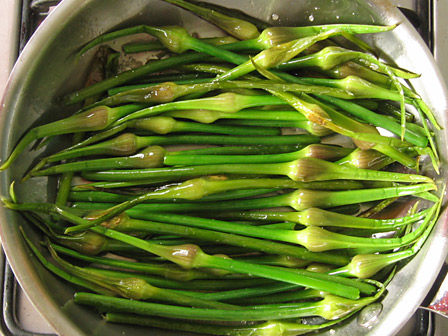Our cows did a great job cleaning up the long grass in the front paddock, but they are heavy animals, and have ended up damaging the soil on some of the steeper parts of the paddock. In those areas, the vegetation has been trodden away completely, exposing the bare soil beneath. The problem was exacerbated by all the rain we have had lately.

Becky plants seeds on the steep area of the future goat paddock
Obviously, we need to avoid erosion and loss of topsoil in areas like that. Here are some of the strategies we are using (or planning to use) to improve the situation.
1) Ideally, we wouldn’t have the cows in that area at all. At the moment, we are trying to arrange to get a couple of goats. Since the goats are lighter, they will be better suited for grazing very steep areas.
2) Whether we are grazing goats or cattle, we obviously need to be especially vigilant about conditions in that paddock. Things can get messed up very quickly in there if it starts to rain heavily, as was the case when the damage occurred.
3) If an area gets broken up by the feet of the cattle, we can plant seeds on it in order to regenerate it and turn it into useful pasture again as soon as possible. The new plants will help to hold the soil and prevent further erosion.
4) Eventually, we hope to plant trees on the areas of the Farmlet that are very steep or otherwise problematic for grazing. This is the best longterm solution for preventing erosion. We could choose to plant trees that will provide forage for the animals and/or food for us, in order to maintain or even increase the productivity of our land. This is a very popular permaculture method.
Yesterday I sowed seeds on some of the damaged areas in the front paddock. I sowed chickory seeds, as well as a mixture called “herbal ley for grazing animals.” We hope that these plantings will eventually provide more varied and healthy forage for our animals.


